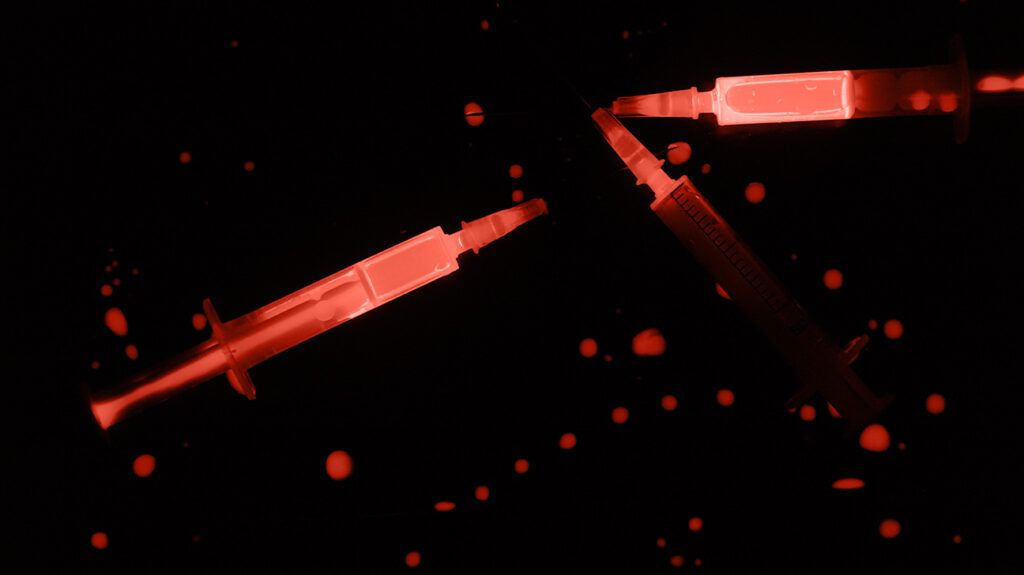Doctors may use radiation therapy to treat benign tumors. Radiation can shrink and eliminate benign growths without doctors having to perform surgery.
Benign tumors are noncancerous growths that can occur anywhere in the body. They may develop when specific cells multiply quicker than they should or do not die over time. Benign tumors may appear similar to cancer, but they grow more slowly and do not spread to other areas.
Radiation therapy is a treatment option for benign tumors. It involves directing high beam radiation particles to the growth, destroying its cells and shrinking the tumor.
This article will review how radiation therapy can treat benign tumors, exploring the benefits and risks, what type of radiation doctors use, and what people can expect from this procedure.

Radiation therapy is a standard cancer treatment that
However, because radiation treatment also kills healthy cells, doctors
Radiation therapy is usually very effective in treating benign growths. Doctors use a lower dose of radiation compared with when they are treating cancerous cells, which means people do not typically experience serious side effects.
How does radiotherapy work?
Radiotherapy shrinks tumors by destroying cells and disrupting their ability to multiply and grow. It may take
Doctors can either give the radiation from the outside, using a machine called an external beam, or by placing a radioactive implant, known as an internal beam, inside the body. Healthcare professionals generally use external beam procedures to treat benign tumors.
Learn more about radiation therapy.
What are benign tumors?
A benign tumor is an
Benign tumors are not a sign of malignancy and grow more slowly than cancer. They have even edges and, unlike cancerous cells, do not spread to other areas or nearby tissues. After their removal, benign tumors do not typically grow back.
Still, benign tumors can sometimes cause severe symptoms and, depending on where they develop, may sometimes be life threatening, such as benign brain tumors.
Learn more about benign tumors.
Radiation therapy can help treat tumors that doctors would otherwise have to remove with a complicated surgical procedure, such as those that develop in the brain. This eliminates the risk of surgery complications, including brain or nerve damage.
Radiation therapy may also help improve symptoms a tumor may cause,
Radiation therapy
However, the risk depends on the amount of radiation a person receives.
People may also develop side effects when undergoing radiation therapy. These can vary depending on where they receive the radiation and
- fatigue
- nausea and vomiting
- diarrhea
- tenderness
- hair loss
- skin changes
Anyone who notices skin changes in an area where they have received radiation therapy should speak with a doctor, even if this occurs weeks or months after they have finished the treatment.
Doctors
- Stereotactic radiosurgery: This is a very precise type of radiation treatment that doctors typically perform to treat benign tumors in the spine or brain.
- Photon radiation therapy: This procedure involves
using X-rays or gamma rays that the doctor delivers to the skin’s surface. The rays penetrate the body, reaching the tumor and destroying its cells. - Proton radiation therapy: This procedure sends a ray of proton particles that stops when it reaches the tumor. For this reason, it has a
lower risk of damaging the healthy tissues behind the tumor.
Before a person starts radiation therapy, a doctor will make several measurements to ensure the radiation points at the tumor with precision, reducing the risk of damaging the surrounding tissues.
A specialist will perform one of the followings scans of the area that requires radiation therapy:
The radiography team may ask the person’s permission to make tiny permanent markings on the skin where they plan to deliver the radiation. These markings ensure the team treats the exact spot during every radiation therapy session.
The team may tell the person how to prepare their skin based on where they will receive the radiation.
An individual should also stop smoking before starting this treatment and make sure they do not get pregnant or make someone pregnant while they are receiving the radiation.
If a person thinks they may be pregnant, they should tell the radiography team immediately.
Before the procedure starts, people may need to change into a hospital gown and remove any jewelry or objects containing metal.
The team will then use a computer to determine the radiation they need to use for the treatment. When the radiation starts, the person receiving treatment must maintain the same position. The entire process usually lasts 10 to 60 minutes.
After receiving radiation therapy, the skin becomes more sensitive.
It is important that people keep their skin moisturized and wear sunscreen for protection from UV light, because radiation therapy can increase the risk of developing skin cancer.
If an individual notices any skin changes in the affected area, such as a rash or color changes, they should speak with a doctor as soon as possible.
Radiation therapy is
Radiotherapy is a common cancer treatment, but doctors can also use it to treat benign tumors. Radiation can destroy tumor cells, preventing further growth and making them shrink over time.
Doctors may recommend radiation therapy to remove benign tumors in areas of the body that are difficult to reach or those, such as the brain, where surgery may have a higher risk of complications.
Radiation therapy is usually very effective in treating benign tumors, and it does not usually cause severe side effects. However, it can make the skin in the treated area more sensitive and increase the risk of skin cancer. People who notice skin changes after radiation should speak with a doctor.
